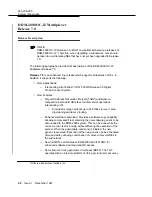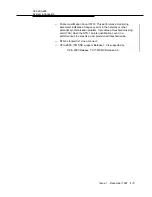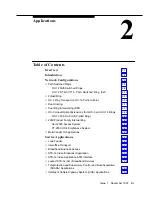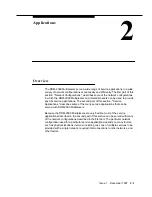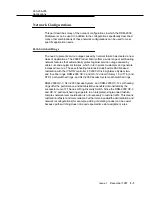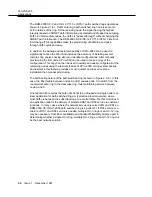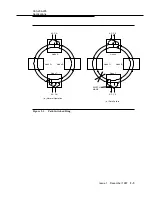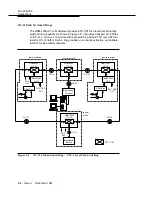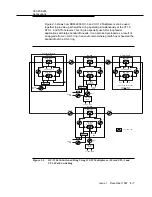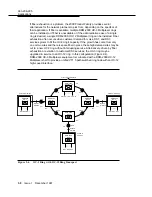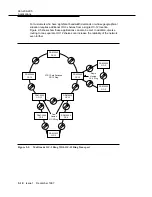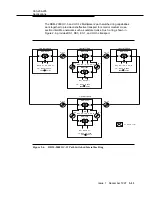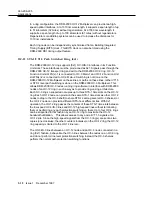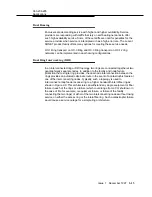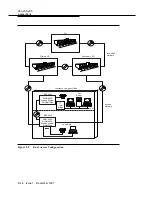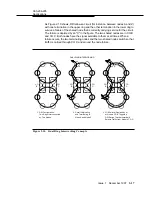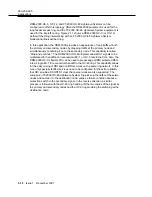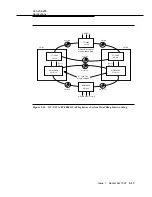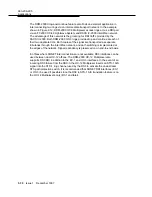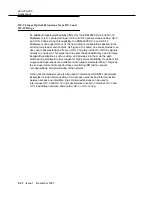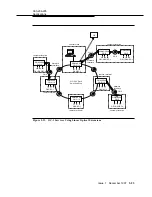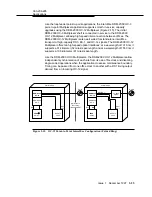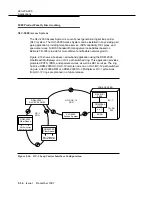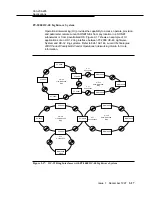
363-206-295
Applications
2-12
Issue 1
December 1997
In a ring configuration, the DDM-2000 OC-12 Multiplexer can provide two high-
speed optical interfaces. At a 1310 nm wavelength, it supports a span length of up
to 51 kilometers (32 miles) without regenerators. At a 1550 nm wavelength, it
supports a span length of up to 100 kilometers (61 miles) without regenerators.
Regenerators or add/drop systems can be used to increase the distances for
1310 nm installations.
Each ring node can be independently synchronized from a Building Integrated
Timing Supply (BITS) clock. This BITS clock can also be timed using the
DDM-2000 DS1 timing output feature.
OC-12 STS-1/VT1.5 Path Switched Ring (0x1)
2
The DDM-2000 OC-12 ring supports (0x1) OC-3/IS-3 interfaces in its Function
Unit slots. These interfaces must be provisioned as 0x1. Signals pass through the
DDM-2000 OC-12 transport ring and exit to the DDM-2000 OC-3 ring. OC-12
Function Unit slot FN(x)-1 is connected to OC-3 Main-1 and OC-12 Function Unit
slot FN(x)-2 is connected to OC-3 Main-2. Switching is not done on the
DDM-2000 OC-12 Multiplexer on these lines, or paths on these lines; rather VT1.5
or STS-1 level path switching is done on the DDM-2000 OC-3 Multiplexer. This
allows DDM-2000 OC-3 nodes running ring software to interface with DDM-2000
nodes of an OC-12 ring in such a way as to provide ring-on-ring architecture.
Each OC-3 ring so supported occupies up to three STS-1 time slots on the OC-12
ring. Each OC-12 node can provision the same STS-1 time slots as other OC-12
nodes to drop to the OC-3 shelf (to share STS-1s among several OC-3 shelves) or
the OC-12 node can provision different STS-1s at different sites. With 0x1
operation, the OC-12 ring passes the contents of these STS-1 time slots between
the low-speed OC-3/IS-3 lines and OC-12 high-speed lines without terminating
them or performing any path protection switching on them. Up to four OC-3 rings
can be supported in this fashion by an OC-12 ring to maximize the OC-12
bandwidth utilization. This allows access to any and all VT1.5 signals at an
OC-12 site. Since the high-speed signals from the OC-3 ring(s) are sent as two
copies (one clockwise, the other counter-clockwise) on the OC-12 ring, the OC-12
ring capacity is limited to the OC-12 line rate.
The OC-3/IS-3 lines between an OC-12 node and an OC-3 node connected in a
ring (0x1) fashion, behave like the OC-3 lines between the nodes on an OC-3 ring
and do not perform line level protection switching. Instead, the OC-3 shelves
perform the normal path protection switching functions.

